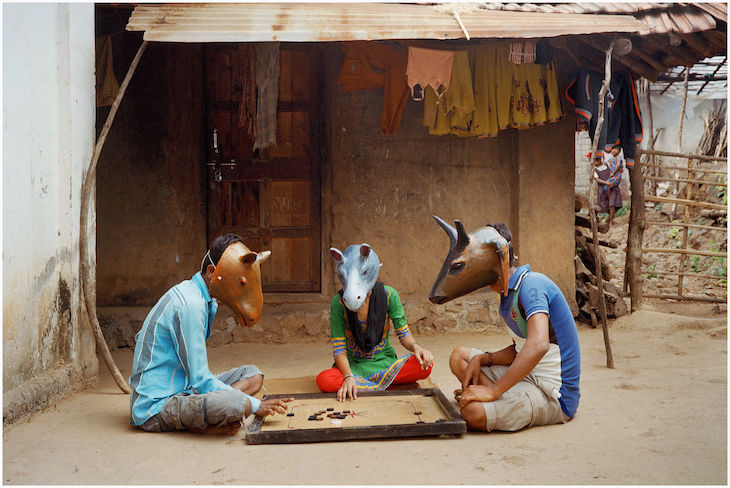Across time masks have been deployed for a range of ritual, aesthetic and practical purposes – a rich history that renders the device of concealment a potent symbol for artists today. In this exhibition, works by 36 artists from 12 countries look at masks in a variety of ways, using media ranging from sculpture to painting and video. Find out more from the Aargauer Kunsthaus website.
Preview the exhibition below | View Apollo’s Art Diary here

World Mask (2014), Christoph Hefti. Courtesy MANIERA and the artist; © Christoph Heki
Masks are one of the oldest and most widespread modes of artistic expression on the planet – as attested by this rug designed by Swiss textile artist Christoph Hefti, which shows a hybrid face formed of traditional masks from Africa, Guatemala, Tibet and Mexico.

Untitled, from Acts of Appearance (2015–ongoing), Gauri Gill. © Gauri Gill
Inspired by the colourful papier-mâché masks of deities and demons used in rituals by the Kokna tribe in Jawhar, Maharashtra, the Indian photographer Gauri Gill embarked upon a collaborative photo series. She commissioned renowned local artists Subhas and Bhagvan Dharma Kadu to create 13 masks of real-life beings and then photographed people wearing them while engaged in day-to-day activities.

OIKONOMOS (2011), Edson Chagas. © Edson Chagas
Masks are central to the practice of Angolan photographer Edson Chagas, whose self-portraits explore the various identities imposed upon the individual by the modern world, frequently by presenting himself in Western clothing while wearing traditional African masks. In his OIKONOMOS series, the bags that conceal the artist’s face series suggest the erosion of individuality by contemporary consumer culture.

Mask (Film Portrait Collage) CLXXIII (2014), John Stezaker. Photo: FXP Photography, London, 2014; courtesy the artist and The Approach, London; © the artist
The British conceptual artist John Stezaker often works with collage to create visual juxtapositions that at first seem random, yet resolve in uncanny ways. In this work, the usual function of a mask is reversed – at first glance the actress’s face is concealed by the postcard of a rural Irish scene, but before long one realises that the arches of rock represent the eye cavities of her skull.











![Masterpiece [Re]discovery 2022. Photo: Ben Fisher Photography, courtesy of Masterpiece London](http://www.apollo-magazine.com/wp-content/uploads/2022/07/MPL2022_4263.jpg)
Suzanne Treister’s tarot offers humanity a new toolbox